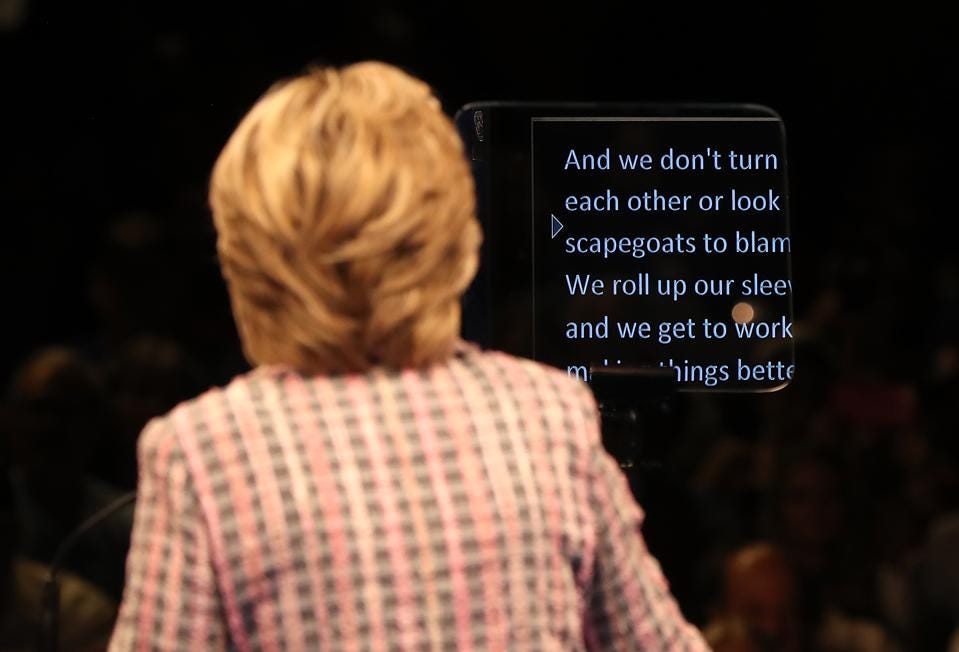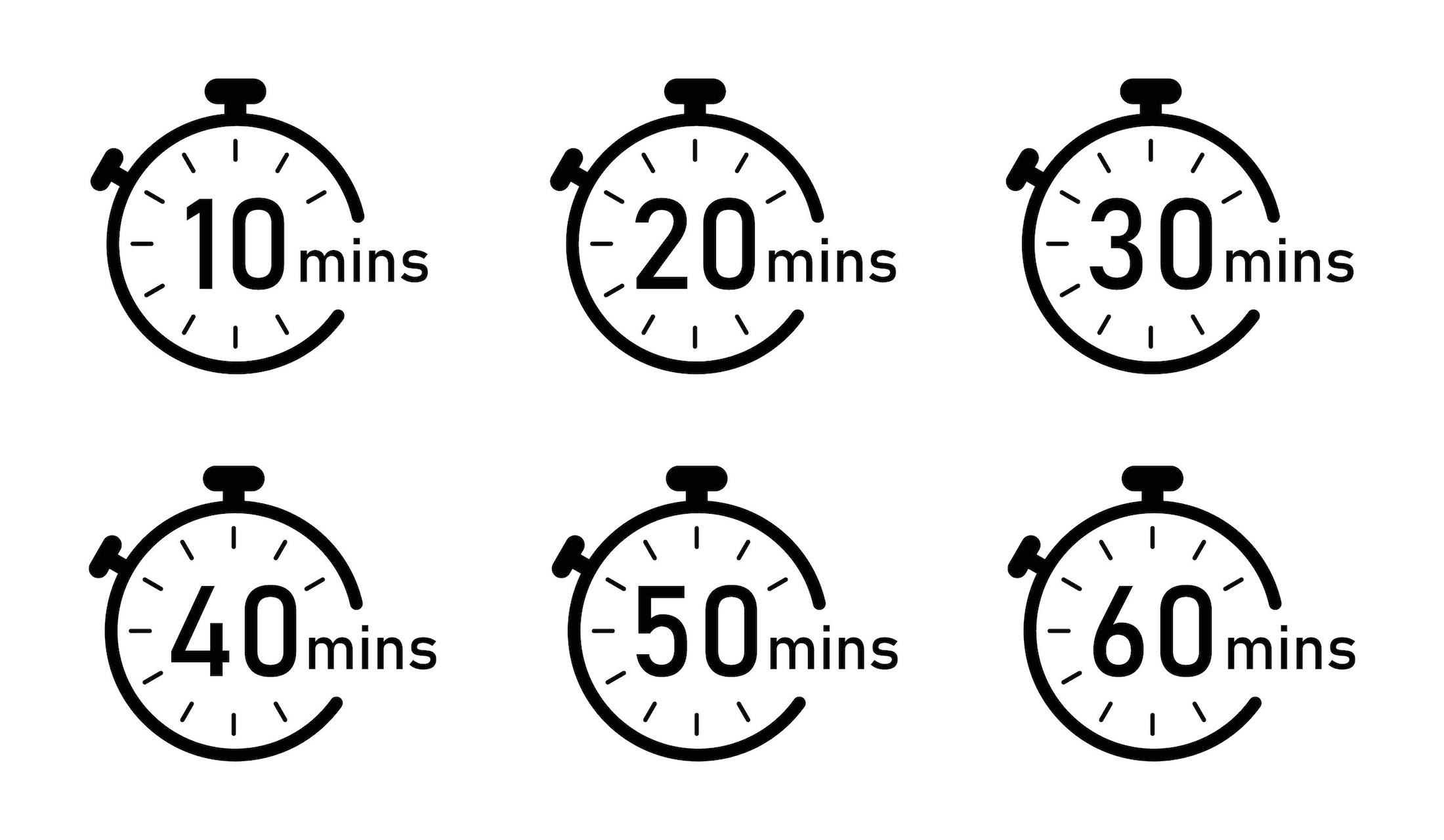To make sure no one misses these valuable tips and techniques, which are now hidden by a paywall, we are reposting past articles by Adrian Dearnell from Forbes.com. Those with an account can still find the original here.

Have you ever wondered how and when to use a teleprompter to make an important business presentation? Being a good presenter is a key to success in business and using a teleprompter can help you turn that key. Reading from a teleprompter can make you look confident, natural and professional. But to get good results with a teleprompter takes a lot of hard work, more than most people imagine. A teleprompter is not a shortcut, or a “quick fix”, but merely a tool that must be mastered like any tool.
Sure, you may consider yourself quite good at talking “off the cuff,” but there are times when just relying on your wit or your memory aren’t enough – for example, when precise wording is important or when there are specific numbers to mention.
In such circumstances, a teleprompter can be a lifesaver. But it does not dispense you from rehearsing. When using a teleprompter, without proper preparation, you run the risk of appearing unnatural and stiff.
A teleprompter is only useful if you tailor it to your speech patterns and your vocabulary. The message may be written for you by someone else, but it must sound like you. This requires reviewing the text and reading it out loud from the teleprompter. Most executives skip this step, underestimating its importance.
Here’s an excellent example of what could go wrong: a well-known U.S. TV host once referred to “Vatican Eleven” in his speech when he mis-read “Vatican II” (Vatican Two) from a Teleprompter.
“Vatican II” should have been written as ¨Vatican Two,” to avoid this embarrassment. Alternatively, the TV host would have spotted the trap if he had rehearsed this text by reading it once-through out loud on the teleprompter.
Here are a few do’s and don’ts:
• Make sure you believe in what you’re going to read out loud. Making a teleprompter look natural is hard enough, so at least sounding genuine is your best shot.
• Own the script. If you don’t write the script yourself, then make it your own by editing it so it “sounds” like you.
• Rehearse out loud and in real-time. There’s no shortcut. You have to be able to speak the words. This is a matter of being comfortable with the actual words as well as being able to pronounce them, and is especially true when reading a text language which is not your native tongue. Just because you know a word in your mind doesn’t mean it will actually come out of your mouth. So read the script through several times and change whatever doesn’t work when you actually speak.
• Write out everything; as we’ve seen above with the “Vatican II” example, abbreviations are accidents waiting to happen. For example, instead of ¨Q1 16,¨ write out what you will actually say: “ First quarter of two thousand sixteen.¨ This is especially true when speaking of monetary units: $0.7 m does not belong on a teleprompter; writing instead ¨700-million-dollars¨will ensure you say the correct number. For example, one of our clients (a french executive we worked with) used to write some unfamiliar english words, focusing on how he could make them sound right, so he would not have to remember their pronunciation. For example, he would write “Positive” like that “pausitive” or “paper” like “pépeur”
• Energy, inflection, gestures are part of the presentation – remember eye contact, gestures, inflection, lest you look like a deer caught in the headlights, staring at the audience. Mark up your Teleprompter text to remind yourself of inflections and emphasis. For example: “What is the answer to our problem? //Well…by working hard//…we can overcome these difficulties.” The underlines will help you emphasize the right words as you read them.
• Set your own pace You will also likely have an operator scrolling your teleprompter for a corporate presentation. It is vital that you and the operator rehearse together so he/she gets used to your speed of delivery. The operator should be following your pace, not the other way around.

Some thoughts about when to use a Teleprompter
The information you want to communicate. A long speech (anything over 10-minutes) will be too much to memorize and may cause you to worry more about the words themselves rather than what you are trying to say. Communicating detailed information or numbers requires written support. Looking down at hand-held notes in this case may be distracting to the audience, and the up-down movement of your head could result in mis-reading the information.
Your audience and the size of the room. Using a Teleprompter in a small room with perhaps a dozen people is just not necessary. For one thing, the apparatus will be too apparent; technology could create a barrier between you and the audience. But in a large group in a large auditorium, when you want to reach out in a personal, yet controlled way, a Teleprompter can help you connect because your eyes will be focused on the audience ( cf. Obama’s speeches).
A teleprompter will help you focus and ignore any commotion around you. It can be a great tool to keep yourself focused on the camera and on what you are saying.
What kind of Teleprompter is best?
Today, there are three types of Teleprompters you may encounter:
• Camera-mounted: This projects the words onto the camera lens, which means you are looking directly into the camera when speaking. It is most-often used in a studio for recording messages (though news anchors use it in “live” broadcasts), rather than in front of a live audience. (Note: if you are an interview guest in a studio, you will usually not need a Teleprompter, as you will be talking with the reporter rather than addressing the audience directly. In fact, in this case, putting your message on a Teleprompter could actually be distracting)
• Floor or standing Teleprompter: This is mounted at an angle on the floor. The problem with this is you may be tempted to look down a lot. And you’re not looking directly at the audience.
• “Presidential” Teleprompters: So-called because they are used by U.S. Presidents. These use the same devices as camera Teleprompters, but are used in pairs and are mounted on transparent glass panels to either side of the podium, so you retain eye contact with the entire audience. The problem here is that you may swivel your head from side to side too much.
And Finally…
Just as the teleprompter replaced cue cards for actors and made performances more “natural,” so will it replace note cards or Powerpoint cues for you, and also make your delivery more natural and more engaging with the audience. But the Teleprompter is a tool- and, like any tool, it needs some practice and coaching to master it. Your audience should not be able to tell that you are using a Teleprompter at all, and that takes some work.
Follow me on LinkedIn. Check out some of my other work here and purchase my book here.
This article was originally published June 13, 2018, Click here to see all Adrian Dearnell’s Forbes contributions





